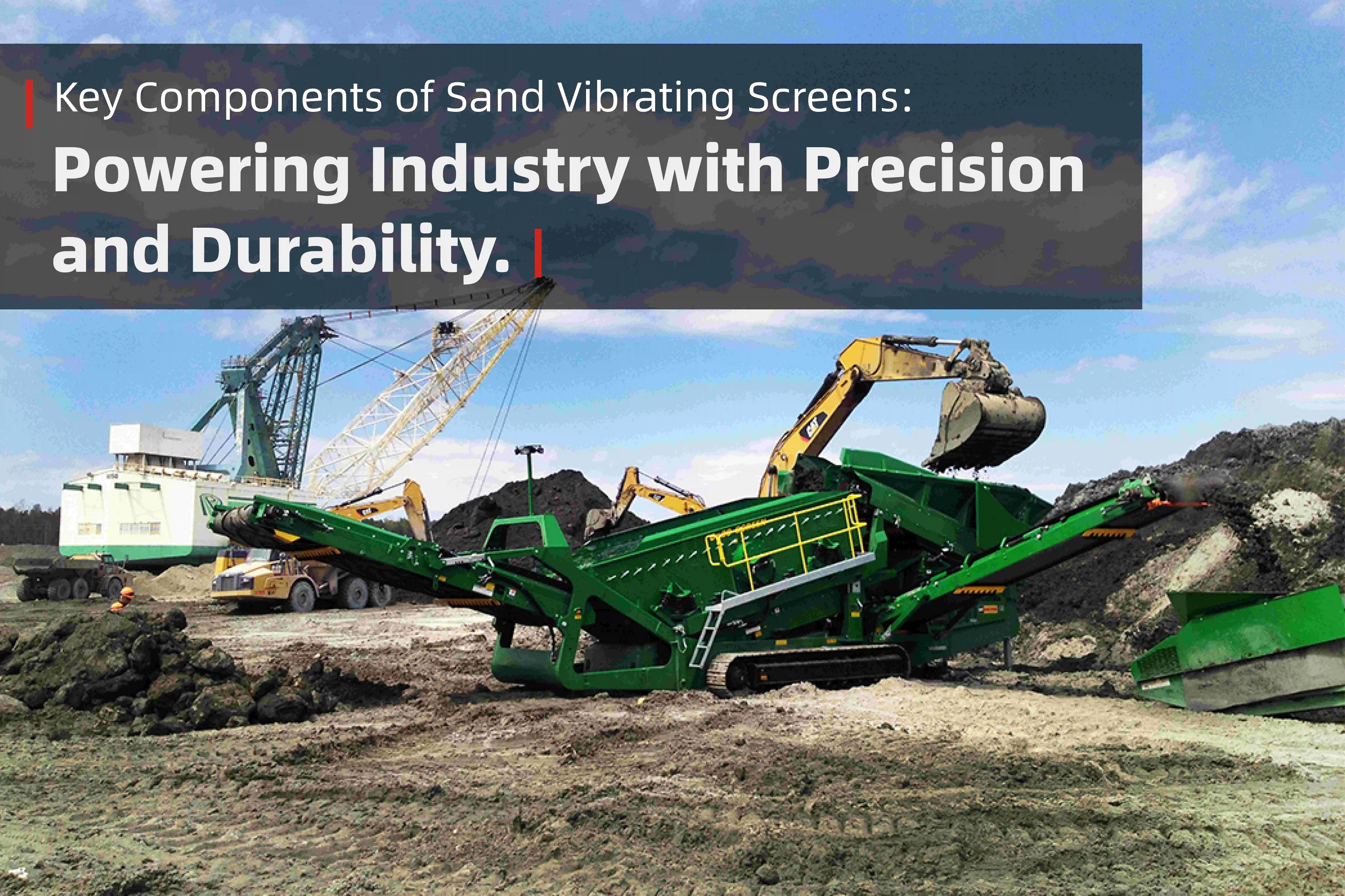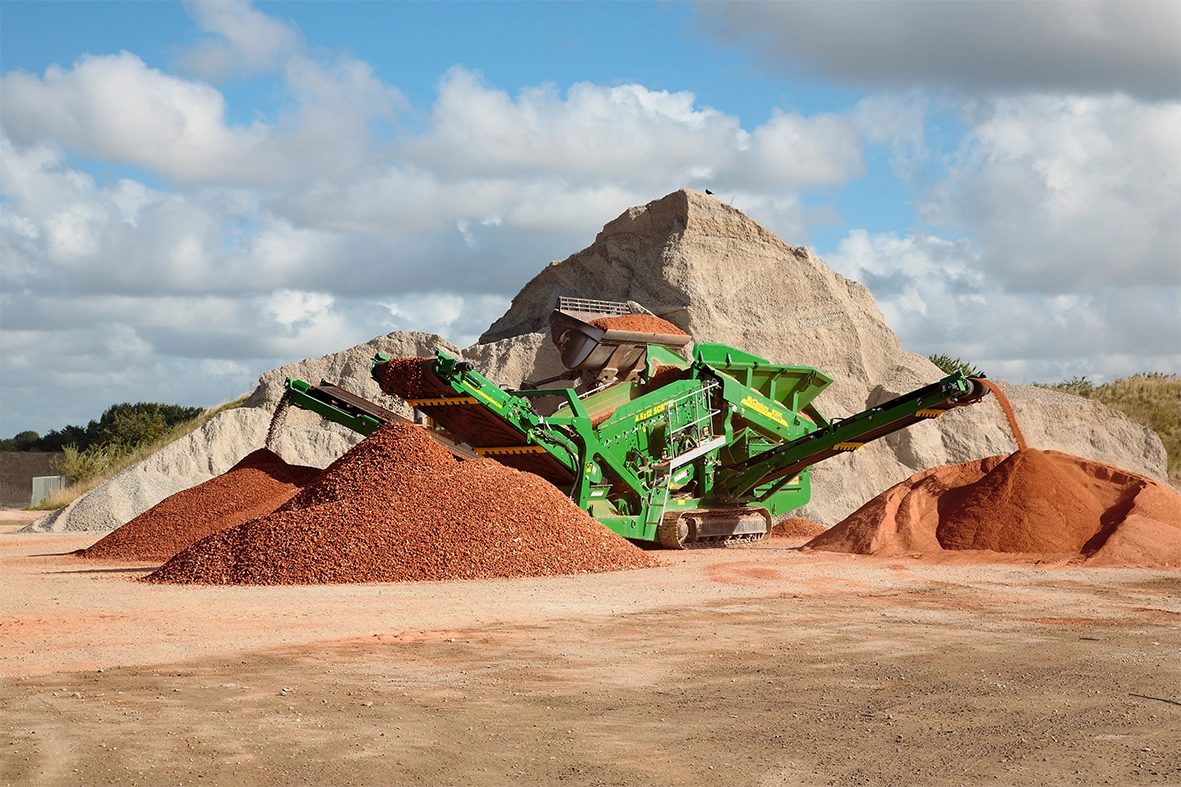
In the world of material processing, particularly in mining, construction, and sand production industries, the term “sand vibrating screen” carries considerable weight. It’s not just a piece of equipment — it’s a core element in achieving precision, efficiency, and consistency in sand grading and separation. But what exactly is a sand vibrating screen? What makes it unique compared to general vibrating screens? Let’s explore its definition, working mechanism, critical components, and the significance of mesh configuration, along with its real-world applications.
A sand vibrating screen is a type of vibrating screen specifically designed to classify, separate, and grade granular sand materials based on particle size. While the term “vibrating screen” is a broad category, sand vibrating screens are optimized for high throughput, fine particles, and materials that tend to be abrasive or sticky.
Key Features That Define Sand Vibrating Screens:
The working principle of a sand vibrating screen relies on vibratory motion to stratify and separate materials based on size. The process is typically driven by:

Types of Vibratory Motion:
The precise motion influences both screening efficiency and throughput capacity — two factors critical to commercial sand processing.
Understanding the components of a sand vibrating screen is essential to maintaining performance and reducing downtime. Each part plays a strategic role in the system’s operation, especially when you opt for high-quality, durable equipment from Vertex Bergbaumaschinen.
(a) Screen Deck (or Screen Surface)
The platform where screening occurs.
Can be single, double, or triple deck depending on the classification needed.
(b) Screen Mesh
The actual filtering medium. Material and mesh size affect performance.
Types include polyurethane mesh, stainless steel wire mesh, and rubber mesh.
(c) Vibrating Motor / Exciter
Generates the oscillatory force.
Typically located at the sides or beneath the screen body.
(d) Spring and Suspension System
Isolates vibrations from the frame and supports stable motion.
(e) Chassis and Frame
Structural skeleton that holds all components and absorbs stress.
(f) Feeder and Discharge Chutes
Ensures uniform material flow into and out of the screen.
Each component must be selected and maintained with the sand application in mind — especially when handling abrasive or wet materials.
The mesh in a vibrating screen is more than just a wire grid. It defines the screen’s performance.
(a) Mesh Size (Opening)
Measured in mesh count (number of openings per inch).
Directly correlates with material size: finer sand requires higher mesh count.
(b) Material Composition
Stainless steel: Corrosion-resistant and strong, ideal for wet applications.
Polyurethane: Great wear resistance, flexible for heavy-duty screening.
Rubber or nylon: Lower cost and noise, but less durable under heavy loads.
(c) Mesh Tension and Maintenance
Proper tension prevents mesh sagging, improves accuracy.
Modular mesh panels allow easier replacement and maintenance.
In sand screening, mesh selection affects throughput, blinding (clogging), and product quality.
The applications of sand vibrating screens span multiple industries. Their value lies in their ability to process high volumes of material with precision.
Key Sectors:Construction and concrete production: Grading river sand and manufactured sand
Glass and ceramics: Ensuring purity and particle uniformity
Foundry casting: Sifting fine silica sand for mold creation
Frac sand processing: High-precision sizing of proppant sands
A real-world example: In a glass manufacturing plant, a double-deck mesh vibrating screen was deployed to separate fine silica sand from impurities, improving product quality and reducing rejection rates by 22%.
Challenges and Optimization Strategies
Even the most advanced sand vibrating screens face operational challenges.
Common Issues:

Mesh blinding: Sand sticking to mesh due to moisture or static
Uneven vibration: Poor installation or unbalanced exciter
Low efficiency: Incorrect mesh or improper angle adjustment
Optimization Tips:
Use modular mesh panels to ease replacement
Incorporate frequency converters to fine-tune vibration
Implement real-time monitoring to prevent failure
As sustainability and efficiency grow in importance, sand vibrating screen technology is also evolving.
Emerging Innovations:
AI and IoT integration for predictive maintenance
Energy-efficient motors and intelligent control systems
Eco-friendly materials for mesh and components
Adaptive screen decks that self-adjust based on load characteristics
In the future, we can expect smarter machines that not only separate materials but also self-optimize performance and reduce energy use.
The sand vibrating screen is more than a screening machine — it’s a fine-tuned solution tailored to the unique needs of sand processing. By understanding its working principles, core components, and the importance of mesh design, professionals can harness its full potential. As technology advances, this critical piece of equipment continues to evolve, meeting higher demands for efficiency, durability, and environmental responsibility.
If you’re considering investing in a sand vibrating screen, Vertex Bergbaumaschinen offers cutting-edge equipment that promises not only efficiency but also durability, ensuring the highest standard in material processing.